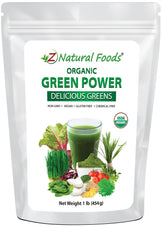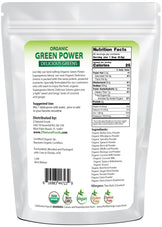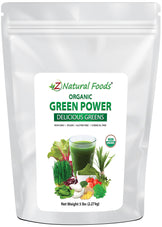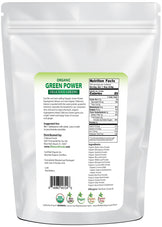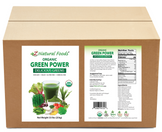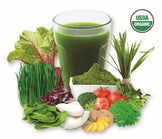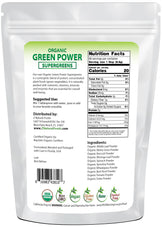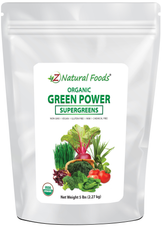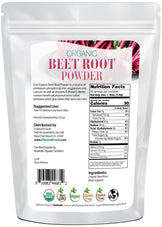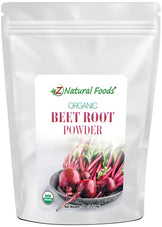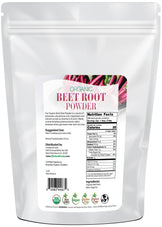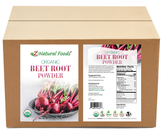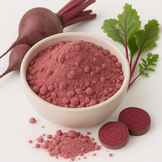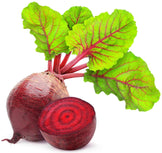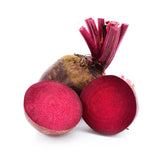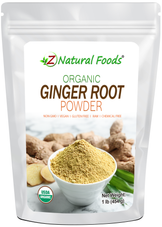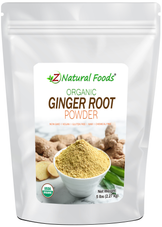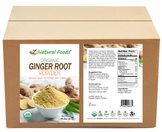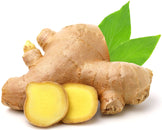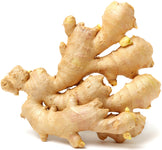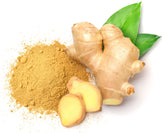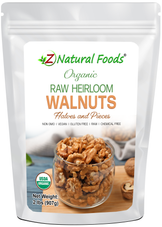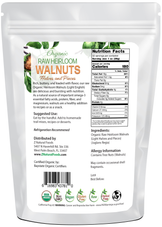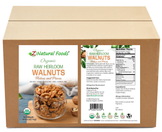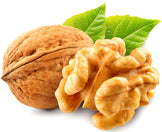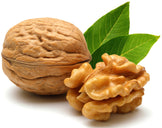Description
Description
If you have become overwhelmed by the many choices of green powder food blends on the market, you have clicked on the right article.
That’s because, if you have not yet tried Z Natural Foods' deliciously-nourishing Green Power functional food blend, you are in for a wonderful surprise!
For many years, green food powders have been considered a modern food product created from an individual or a wide variety of dried or juiced grasses, vegetables, and seaweeds to develop a quality source of concentrated nourishment for supporting the health of human physiology.
Green foods have a tremendous reputation for providing high-quality nutrition, like micronutrients and phyto-compounds. When prepared and utilized correctly, they can be an excellent and easy way to add concentrated nourishment to your diet.
Get ready to supercharge your health with Green Power Organic Delicious Greens and feel the difference!
Health Benefits Of Our Green Power Super Greens
There is overwhelming evidence that green foods are incredibly nutritious. They support our detoxification pathways tremendously and provide critical nutrients and compounds for optimal function.
Some examples include:
1. Boosts Immune System Health
Our Green Power Super Greens have antioxidants and vitamin C, keys to a healthy immune system. These nutrients will help neutralize free radicals, reduce inflammation, and boost the body's natural defenses. Spirulina, chlorella, and green tea extract are just a few ingredients known for their immune-boosting properties. With this blend of greens, you can always rely on getting that energy boost or immune support you need.
2. Detoxification & Cleansing
Daily exposing your body to toxins, a diet that does not contribute towards a healthy body, and environmental stress will eventually overburden the body to balance its condition. Our Green Power Super Greens works to detoxify, cleanse, and remove unwanted stuff from the body. Chlorophyll is a green pigment that occurs in all plants to clear toxins while causing alkalinity in the body. Ingredients like barley grass and wheatgrass are rich in fibers and have a natural detoxifying ability, promoting the liver and better digestion.
3. Healthy Digestion
Digestion is the base of overall well-being. This balance will be achieved due to the fiber content from our Green Power Super Greens in your digestive system, reducing bloating and regulating regularity. Amylase enzymes break down carbohydrates, while the alkaline properties of these greens help stabilize pH in the body, creating a healthy gut environment. This super green power within your daily smoothie or juice gives your body the nutrients that support healthy digestion.
4. Boosts Energy & Metabolism
Are you looking for a natural energy boost without the jitters of caffeine? Green Power Super Greens deliver just that. Ingredients like oat grass, barley grass, and spirulina help improve your body's energy production, offering sustained daily vitality. The unique blend of minerals and vitamins works synergistically to enhance your metabolism, improving your body's ability to burn calories and balance blood sugar levels naturally.
5. Improves Skin Health and Rejuvenation
The antioxidants present in our Green Power Super Greens also have skin rejuvenation-promoting elements. Using this supplement daily can minimize wrinkles, fine lines, and blemishes. Chlorella and spirulina contain vitamins and minerals that help the skin look more radiant and healthy. You can have clearer and healthier-looking skin by cleansing the body through its system.
6. Chronic Disease Prevention
The most significant benefit of consuming Green Power Super Greens is its power in chronic disease prevention. Its high concentration of antioxidants and anti-inflammatory compounds, together with the detoxifying action of ingredients such as wheatgrass, chlorella, and spirulina, assist in lowering your chances of developing chronic diseases, such as heart disease, diabetes, and cancer. Magnesium and calcium combine to keep your bones healthy. Vitamin C supports the creation of collagen in joints and skin.
7. Promotes a Healthy Brain
Green Power Super Greens is also brain power that supports the nutritional benefits of good cognitive functions. Spirulina, Chlorella, and green tea extracts form a comprehensive nutrient base with good cognitive health benefits. Super-rich phytonutrients found in these superfood nutrients will greatly help to improve your memory and concentration, and you will be mentally alert and agile to take on a challenge in this competitive world throughout the day.
8. Aids weight loss and diet
Incorporating Green Power Super Greens into your diet is a great way to support weight loss efforts. The fiber content will help curb appetite, promote satiety, and regulate digestion. Furthermore, the blend of greens and superfoods helps balance your body's metabolism, making it easier to shed those extra pounds. It's a great addition to any diet plan, whether following a detoxification routine or simply trying to maintain a healthy lifestyle.
9. Natural Sugar Substitute
Many struggle with sugar cravings, especially if they are looking to maintain a healthy diet. Green Power Super Greens can be a natural sugar substitute in smoothies or juices to take red and green together. The rich nutrients and minerals will satisfy the body's craving for nutrients without the empty calories or sugar spikes from processed foods.
10. Improves Absorption of Nutrients
The chlorophyll and enzymes in Green Power Super Greens make sure that your body absorbs all the nutrients from what you eat, making every meal count. This is essential to maintaining energy, supporting metabolism, and achieving general wellness.
What makes ZNaturalFoods Green Power Organic Delicious Greens unique?
Greens are the only market product selective enough regarding premium, full-spectrum extract concentrates. While many green powders only mix various ingredients together, our effective green powder includes properly prepared extracts of functional foods such as mushrooms, adaptogens, and herbs, allowing for the highest bioavailability and efficacy. With us emphasizing organic, whole-food ingredients and excluding all fillers or artificial additives, our greens powder supplies concentrated nutrition to fuel up, build up immune support, and detoxify once and for all with this delicious, easy-to-take blend.
How To Add Green Power Super Greens Into Your Diet
Smoothies: Combine a scoop with fruits, veggies, and your favorite liquid (water, almond milk, coconut water).
Juices: Mix into fresh juices like apples, carrots, or cucumber for a nutrient-packed drink.
Water or Coconut Water: Stir into a glass of water or coconut water for an easy, hydrating option.
Yogurt or Oatmeal: Sprinkle over yogurt or stir into oatmeal for a healthy breakfast boost.
Detox Water: Mix some water with lemon, cucumber, or mint to create a detoxifying drink.
Energy Bars/Bites: Incorporate it into homemade energy bars or protein bites for an easy snack on the go.
Soups or Sauces: Mix in soups, stews, or spinach pasta sauces during the last stages of cooking.
Coffee or Tea: Add a little to your coffee or green tea for extra nutrition.
Baking: Sprinkle on top of muffins, pancakes, or energy bites for a healthier version of your favorite treats.
Power Bowls: Sprinkle on top of quinoa, rice, or salad bowls for added nutrition.
Conclusion
In conclusion, compared to many other products, you may look at Z Natural Foods Green Power and think there is nothing special about it.
You are correct if your opinion is solely based on the number of ingredients. It is a simple twelve-ingredient product in a whole food form, providing a full spectrum of nutrients and compounds as they occur in nature. Sometimes less is more, and keeping it simple is one of the keys to good health.
Go here for more information about our Green Powder - Organic SuperGreens Blend.
Go here for more information about our Green Powder - Organic Delicious Greens Blend.



